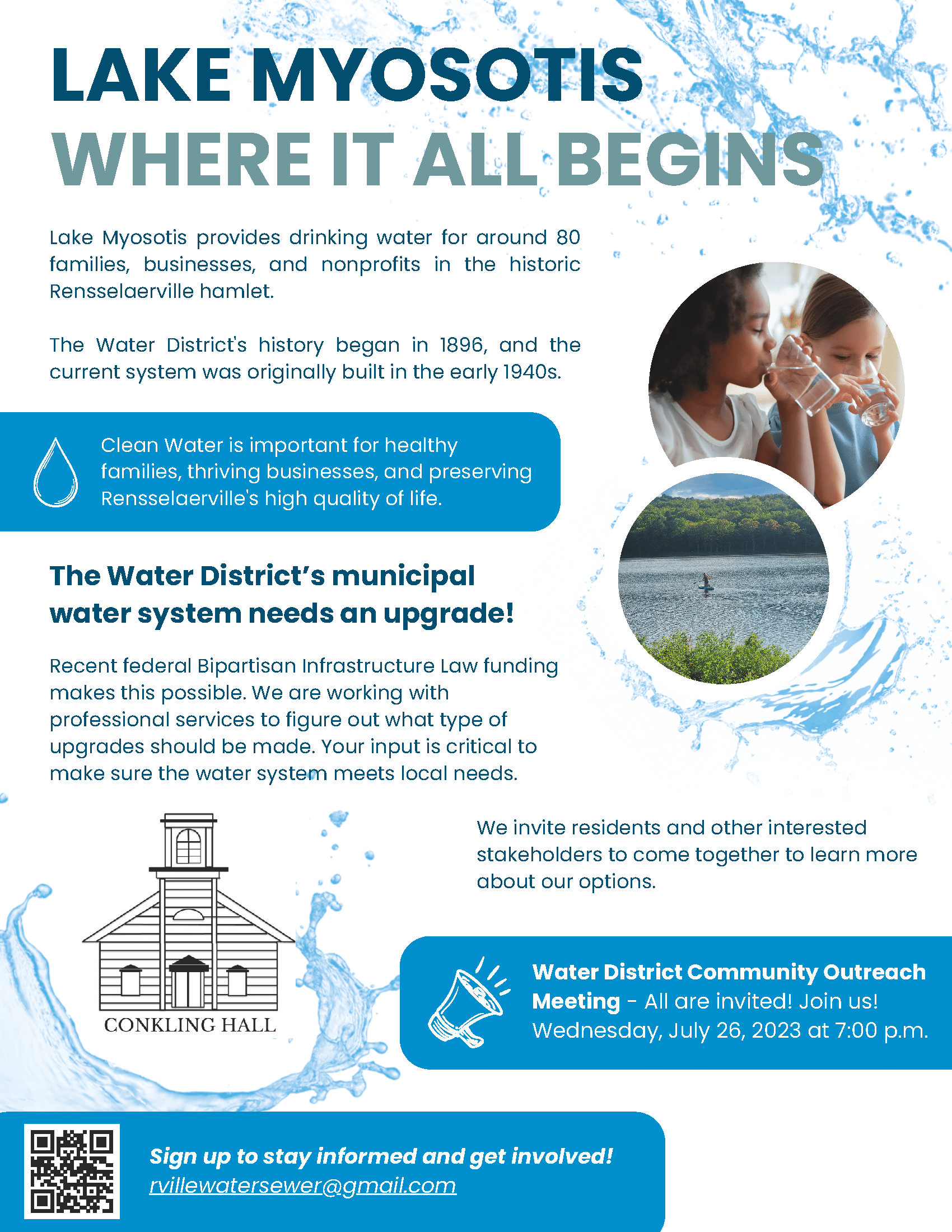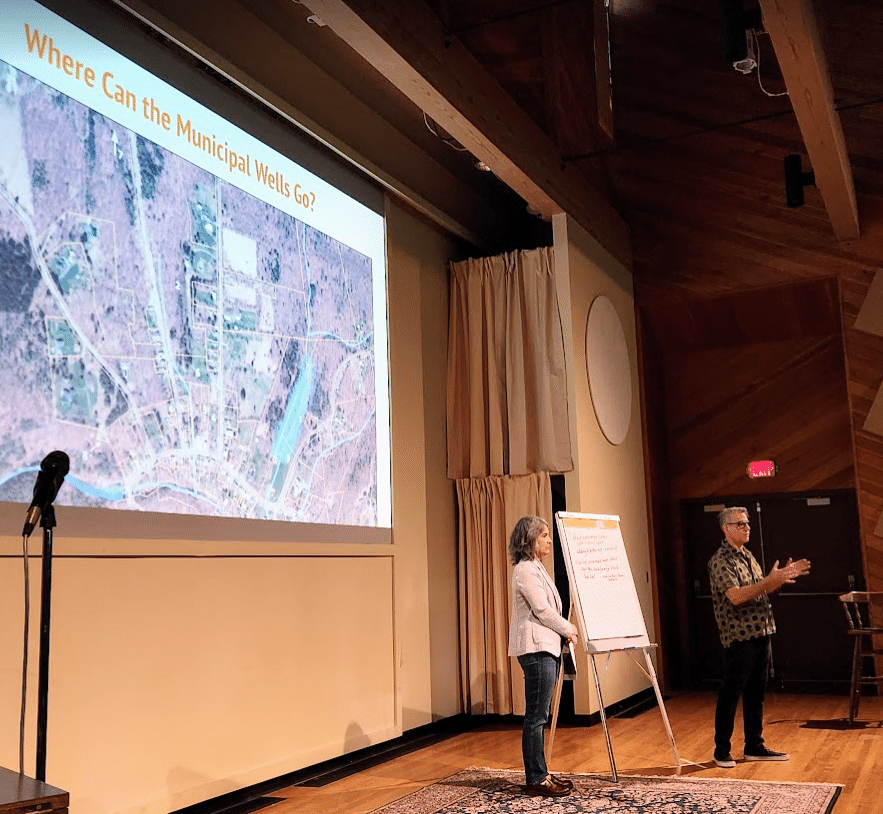Driving through the winding roads of the Catskills, it’s hard to believe that New York City is only a few hours away. The picturesque views of forest and farmland give way only to the occasional village, where locals greet each other by name and many have lived for generations. These small towns sprung up around the area’s waterways, providing power and transport for lumber and grain mills across Albany County. Today, the Hamlet of Rensselaerville is home to both old and new residents, drawn to the historical architecture, the natural beauty of Lake Myosotis, and the Edmund Niles Huyck Preserve biological research station. Once powered by the water running through it, the hamlet now faces a new challenge: powering its drinking water system into the modern age.
The Rensselaerville Water District only serves about 200 people and has no paid staff, but demonstrates how even the smallest systems can secure major investments if they proactively engage volunteers, explore options to improve their funding eligibility, and build strong partnerships.


#1: Tap Into Community Champions
When Ed Csukas moved to Rensselaerville in 2022 to renovate a historical B&B with his wife, he wasn’t expecting to refurbish the town’s water system too. Looking to contribute to his new hometown, Ed joined the all-volunteer Water Committee as they were facing the threat of a consent order from New York State regarding Lake Myosotis, the community’s drinking water source.
While the Committee lacked technical expertise, they made up for it in dedication. Led by community champions like Ed, the group sought out free technical assistance to proactively address potential surface water issues in New York State. Recognizing early-on that community buy-in would be critical, the Committee emphasized the need for strategic planning and community engagement before approaching the town for financial assistance. With this in mind, they launched an initial outreach effort to educate residents on the origin of their water and the importance of its protection.
With the public now behind them, the Committee presented their proposal for the town to fund a Preliminary Engineering Report (PER) to explore alternative drinking water sources. Although an engineering study was no small expense for the town, the Committee knew they could turn that report into a comprehensive state-funded infrastructure upgrade that would benefit the hamlet for decades. Ultimately, the town agreed to allocate public funds through municipal bonding, with the understanding that the water district would eventually reimburse them.
#2: Find Ways to Improve Funding Eligibility
Like many states, New York prioritizes its Drinking Water State Revolving Fund (DWSRF) for communities below a certain income threshold. The Rensselaerville Water District serves a small population and faces financial strain, but the Committee was uncertain whether their residents would meet New York State’s “Hardship” criteria. Census data reflected the entire town, which includes higher-income second-home owners, and likely overstated the hamlet’s actual income level.

To provide a more accurate picture, the Committee hired an independent third party to conduct an alternate median household income (MHI) survey focused only on district water users. Led by a former law enforcement officer experienced in door-to-door outreach, the survey found an MHI of $55,000. This qualified the district and increased the percentage of project costs eligible for DWSRF grant funding, with the remaining balance supported by no-interest financing. The updated income assessment significantly improved the district’s ability to move the project forward.
#3: Leverage Local and Regional Partnerships
When the Rensselaerville Water Committee first reached out to the Syracuse University Environmental Finance Center (SU-EFC) for help, they didn’t realize they were tapping into a wide-reaching network of technical support. The EPA-designated Environmental Finance Centers have served all 50 US states and territories for over 30 years, helping communities address the financial challenges of environmental protection and infrastructure improvement.
This partnership helped strengthen the Committee’s technical capacity and strategic direction. With guidance from SU-EFC, they submitted a DWSRF application in June 2024 for a comprehensive drinking water project. The proposal aimed to replace their current system with a new groundwater well source, treatment plant, storage tank, and pump station. The upgrades are designed to improve water quality and system reliability for district residents.
By September 2024, the Committee secured a DWSRF financing package that included $1,786,250 in grants and $765,536 in interest-free financing. The Committee is now in the process of selecting an engineering team to finalize design and construction plans for the project.

Final Thoughts
Rensselaerville’s story shows that even the smallest water systems, with no paid staff and limited resources, can unlock transformative investments. By rallying local champions, using creative strategies to improve funding eligibility, and building strong partnerships, the Water Committee turned a regulatory challenge into a multimillion-dollar opportunity to improve their infrastructure.
Small systems do not have to navigate this process alone. Free support, planning tools, and expert guidance are available to help communities strengthen their water systems and access critical state and federal funding. With the right support and a proactive approach, even the smallest water systems can make significant progress toward long-term sustainability and resilience.
